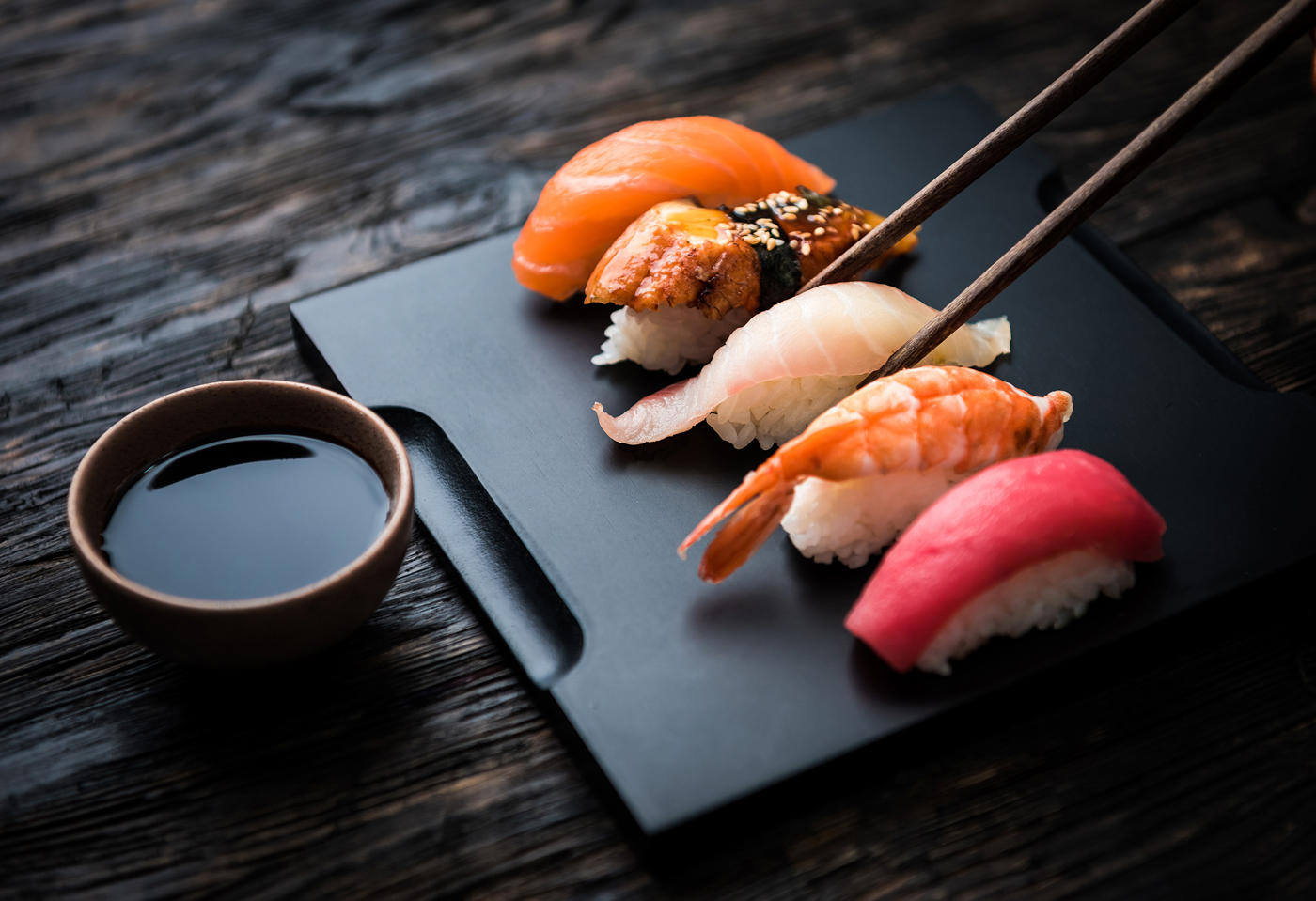

MASTER'S BOOK
UNIQUE JAPANESE SAUCES: A VARIETY OF USES
Japanese sauces
Japanese sauces have a distinctive oriental taste and are quite different from European add-ons, such as tomato sauce. With hot and sweet-and-sour sauces, the intensity of flavour can be adjusted to one’s preference.
Japanese teriyaki sauce
Teriyaki is a cooking technique widely used in Japan. Teriyaki dishes are classified as part of yakimono, a category which includes roasted or grilled meat and fish prepared in tare basting sauce. Tare includes mirin, which is a type of sweet sake, as well as sugar or honey and soy sauce.
Japanese soy sauce
One of the most distinctive and popular sauces in Japanese cuisine is soy cause (shōyu). Made from rice, wheat or soybeans, water and salt, this fermented sauce is regarded as one of the most essential condiments in Asian cuisine, including the Chinese and Indonesian ones. The Japanese version is unique for its thin consistency and salty taste. Dark and transparent, soy sauce is extremely aromatic, which makes it perfect for adding flavour to dishes of Japanese cuisine (e.g. sushi or ramen). As many as six varieties of soy sauce are produced in Japan, including:
- Tamari – has a dark colour, made from soy only; often served with sashimi.
- Koikuchi shōyu – made from 50% soy beans and 50% grain; the most popular sauce.
- Kanro shōyu – traditional sauce from Yanai, Yamaguchi Province.
- Saishikomi shōyu – most popular with sashimi and sushi; has a full aroma and is strongly processed.
- Shiro shōyu – sauce with the lightest colour and a sweet flavour; made from a varierty of grains.
- Usukuchi shōyu – salty, light-coloured sauce with a short ripe time.
Japanese sushi sauce
Sushi is one of the most distinctive and popular dishes originating from Japan. Both sushi and sashimi are served with carefully selected sauces to achieve the desired flavour. Popular sushi sauces include soy sauce, as well as teriyaki sauce, wasabi (hot Japanese horseradish condiment), and soy and mirin-based sauces.
Japanese noddle sauce
Japanese noodles are famous all over the world. Gourmets of Japanese cuisine love ramen, udon, soba and somen, which are served with soy sauce, or sauces based on mirin, Japanese rice vinegar, sake or dashi. Ready-made sauces, such as Yamaki, available in stores selling Asian food, are popular as well. Japanese cuisine also includes noodles combined with oyster sauce.
Sauce for every occasion
Japanese sauces come in many versions, with the original recipes being improved and evolving in European cuisine. Yet tradition wins with modernity: the vast majority of consumers prefer the simplest products, such as soy sauce, teriyaki, okonomiyaki or mirin-based sauces. They are what makes Japanese food taste and smell so unique.























